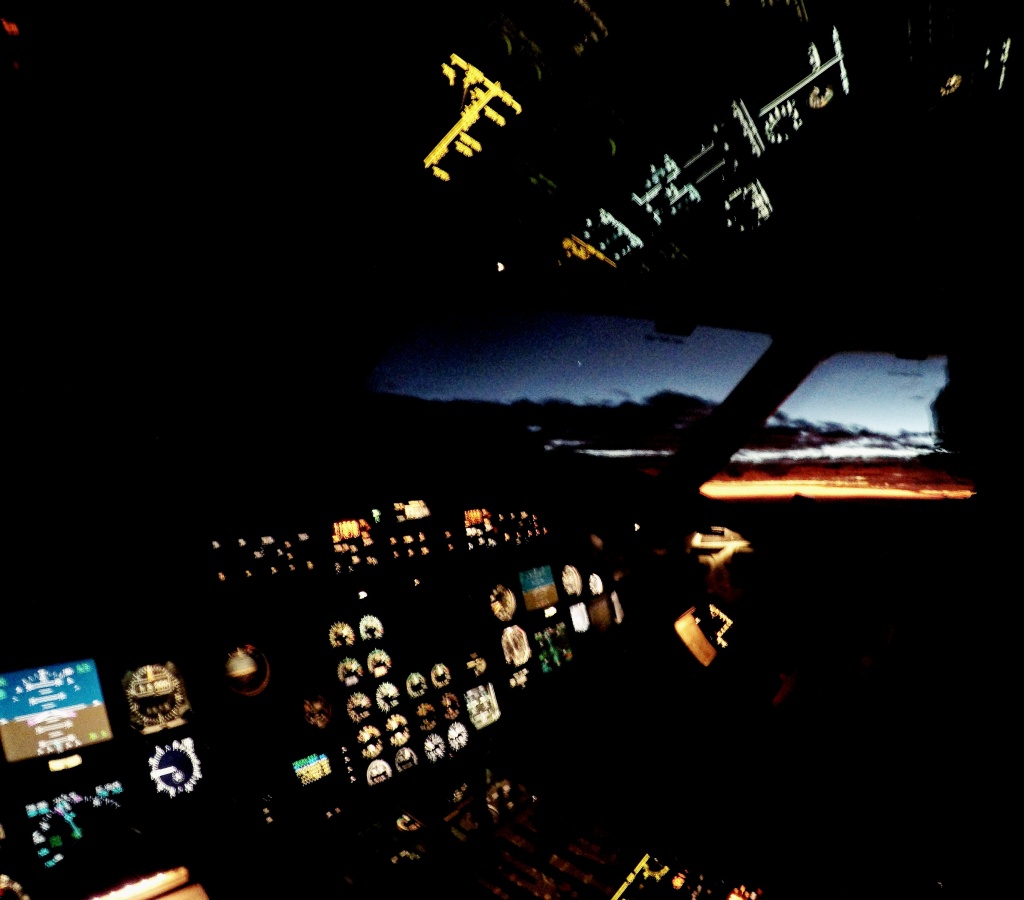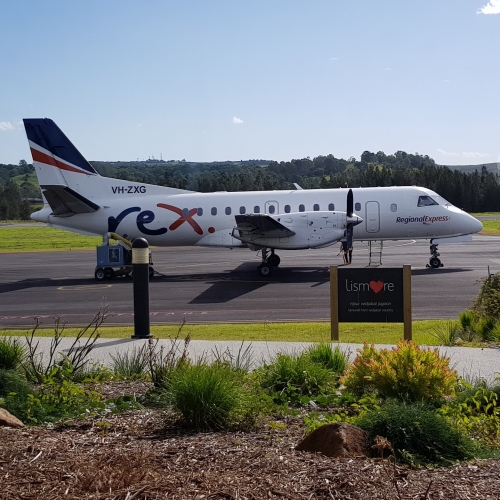After my three week training adventure in Sydney, I felt like I had, after leaving a cadet, returned to Albury a pilot, like a young warrior filled with new confidence from his first victory, returning home a man.
I was finally over the hurdle (or perhaps ten foot wall) of training. I was free to move forward, do my job and earn my worth.
My first line flight was Christmas eve. Coincidentally the captain was my housemate Tony, who took me under his wing, a bit like an older brother would take care of his younger brother.
I immediately noticed a more relaxed atmosphere. There were no lessons, questions or testing from a training captain. We’d just go flying, enjoy it and help each other to get the job done professionally. This was the first time since flying solo in a piper warrior, almost a year ago, that I wasn’t under direct training. It was also the first time since then that I could just take it all in and enjoy the view and the job with time to chat about life and have a laugh. And we’d often find a lot to laugh about. – One time our flight attendant, Nell, who was also my housemate, generously offered to hang my jacket in the cabin coat rack, rather than hanging it myself behind my seat in the flight deck, as I usually would…

What I didn’t know, was while we were in flight, Nell took out a small sewing kit and stitched up the cuffs of my jacket sleeves. So after landing in chilly Melbourne, I stepped out of the flight deck, took my jacket from Nell, trotted down the stairs, secured the propeller and threw my jacket on. Only to find my hands stuck in my sleeves. With a confused “wtf” face, I turned around to see Nell and the first row of passengers peering out of the door giggling at me in my struggle. After an awkward moment, I shook my head and laughed, then hung my jacket from the propeller (not a professional look I know) and stood in the cold, while our 25 passengers disembarked, all having a sympathetic laugh at me.
After Christmas day, we began a reduced summer schedule. Since we were slightly short of first officers in Albury, I was still flying five or six days a week, but often only 2 flights a day. Some days we’d do a “Cheeky morning or afternoon Melbourne,” a flight to Melbourne and back, a total of three hours work for the day. I would start work at 6 am and be done by 9 am, home in time for breakfast.

Even though the summer pace was very leisurely. I was still very focused, I wasn’t ready or mentally able to let my guard down. I had only 400 hours in my logbook and a lot more confidence to gain. When you’re that inexperienced, you know there’s still a lot you don’t know or haven’t seen yet. Your performance tends to be inconsistent, more affected by fatigue and high workload since your new skills and habits are still being conditioned. So you tend to make mistakes slips and errors more often.
On top of that, each day that I went to work, I was worried that I would fly with the local Check Captain. Who had a bit of a “hard-ass” reputation, and could make my life difficult. To be fair, I’d copped a bit of heat from him during my training and I didn’t want to be on the receiving end of that again. So, before each flight on the drive to work, I’d recite emergency briefings and memory items, just in case I flew with him. I wanted to start on the right foot and look sharp early, so he’d be less critical of any other mistakes I might make to his high standard during the day.
Between this and the extra training I had received before being released to the Line. It was a real blessing for me, compared to only scraping through at the minimum standard. My base level was higher than the minimum standard it needed to be for my experience level. So even with the natural regression that we all have after a period of training, I still maintained a proficient and compliant standard.
Thankfully, because every 3 months we’re either being tested in the simulator or the aircraft for a re-currency or Line check. And if you’re below the standard on the given day, you’ll fail and then go back to the stress of retraining, worrying about your future.
Unfortunately, we don’t get much positive feedback or praise in this job, there’s always something we can improve. And we get overwhelming negative feedback if we screw up. You never see the thousands of successful flights on the front page of the newspaper, only the rare unsuccessful ones. So it is up to yourself as a professional to monitor your standards keep improving and avoid the trap of complacency.
Only after a few months on the line. I received some rare praise that is still memorable to this day. All-be-it from a second-hand source. – My housemate Nell came home after a flight with the mentioned “Hardass Check captain”, who she got along with fantastically I should add. She told me who about her day and reported to me, “He mentioned that you’re a good operator and you’re doing well.” This comment was a welcome surprise and hedged my confidence. It was nice to hear those words about myself as a pilot. In this industry, our reputation precedes us, and in small circles, we’re often the last to hear about our reputation.
I was happy to receive that indirect feedback. Especially since there were quite a few pilots in the company who had an opinion that cadets didn’t deserve to be there. We had “jumped the queue”, had it easier than they had, were inexperienced and would be unsafe to fly with and they didn’t want us there. Even if they liked us in person, it still bothered them in the beginning that we were there. This only lasted for a year or two before it faded away. And by the time I left Rex, half of the pilots in the company had started flying as cadets, they were also some of the best pilots that I flew with.
Coincidentally or not, after hearing the positive feedback about myself, “hard-ass check captain” became enjoyable to fly with and not so intimidating.
By February I was doing twenty flights per week and thoroughly enjoying myself. I remember waking up before 5 am thinking; I can’t imagine another job that I’d be as happy to wake up at this time in the morning for. It was a major contrast to only a few years earlier; dragging myself out of bed at 8:20 am to get to High School (still half asleep) at 8:48 am, two minutes before homeroom finished just so I could have my attendance marked off without a “late”.
Some days I almost had to pinch myself that at the age of only twenty-two, I had the career that I had.
As I gained experience, I was growing more confident. Thankfully, it’s never too long before your confidence gets tested.
Cleared for takeoff in Sydney one afternoon, Tony pushed the power levers forward, calling “set power”. I moved the CTOT switch forward, setting the takeoff power then scanned the engine gauges and instruments. Before I could even look outside, the aircraft jerked with yaw to the right. “STOPPING!” Tony said quickly as he stepped on the breaks and brought the aircraft to a stop. I was completely lost between setting power and finding ourselves unexpectedly stopped. I didn’t even realise that I had just experienced my first rejected takeoff. I’d only ever practised rejecting in the Simulator from high speed. This was a very low speed reject, barely even 20knots, so combined with the startle effect, I didn’t identify what had happened and I didn’t know what procedures to apply. Thanks to Tony leading, I finally caught up to what was going on; The right engine had lost power early into the take-off roll. An “Inadvertent auto-coursen” I later learned from an engineer. But the most important things I learned from this experience was; how much I still had to learn and how much I still wasn’t ready for. So the learning never stops. Luckily for me, I had many years flying as a first officer ahead of me, flying with skilled captains who I could learn from.












